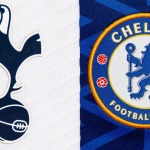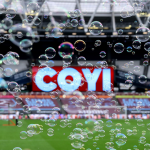
THE way Manchester City crashed out of the Club World Cup was a throwback to last season. In particular, the 4-3 defeat to Al-Hilal was reminiscent of a period between November and December when Pep Guardiola’s team lost six out of eight Premier League fixtures. The old problems were there again.
Al-Hilal were well worth their win. They could have scored even more. The Saudi Pro League side created seven Big Chances (as Opta defines them), taking four of them. Similar to so much of last season, City were so easy to play through. It was a reminder that Guardiola’s reconstruction project is a long way from being finished.
And yet until Monday’s match in Orlando Manchester City had excelled at the Club World Cup. They won three out of three games in the group stage, demolishing Juventus 5-2 in a game that highlighted the progress made this summer. More encouraging than the results was that Manchester City looked like a Guardiola team again.
City’s rebuild started in January when over £200m was spent on Omar Marmoush, Nico Gonzalez, Abdukodir Khusanov and Vitor Reis. Marmoush made an instant impact, scoring seven goals in his first 16 Premier League games, but the others took more time to settle into their new surroundings.
Manchester City 🆚 Al Hilal#FIFACWC pic.twitter.com/XlJNpBD2gJ
— FIFA Club World Cup (@FIFACWC) July 1, 2025
Guardiola’s vision for City’s future became even clearer with the signing of Rayan Cherki, Tijani Reijnders and Rayan Ait-Nouri for the start of the Club World Cup. The addition of these three players gave the Catalan coach a greater degree of tactical flexibility which he used to good effect in the games against Wydad, Al Ain and Juventus.
Full backs are back. While Guardiola has spent much of the last three seasons using centre backs like Josko Gvardiol and Manuel Akanji at left and right back, he is now utilising two conventional wide defenders in the shape of Ait-Nouri and Matheus Nunes, both of whom made a major contribution at the Club World Cup.
Ait-Nouri was particularly productive, quickly settling into Guardiola’s new structure following a £31m transfer from Wolves. The Algerian likes to get forward and has given Manchester City a different dimension with his passing and crossing ability into the final third. His performance in the group stage demolition of Juve was a real statement.
With Ait-Nouri high and wide, Guardiola was able to push his wingers inside the pitch. Indeed, Jeremy Doku’s starting position has been further away from the touchline than it was last season when the Belgian was in the Manchester City team to isolate opposition defenders and drive at them with his speed and trickery.
Guardiola’s tactical tweak to get more City players into the centre of the pitch has accelerated the possession play of his team. The Premier League outfit are moving the ball more quickly at the Club World Cup with Manchester City constructing attacks like a quintessential Guardiola side. ‘Tiki-Taka’ is back. This was evident even as City lost to Al-Hilal.
In theory, having so many players central should also help Manchester City congest the middle of the pitch against the ball, making them harder to play through. This was the case in the win over Juve, but against Al-Hilal Ilkay Gundogan and Bernardo Silva both struggled with the speed and physicality of the Saudi opponents. The lack of pace at the back was also an issue.
The defeat to Al-Hilal wasn’t in Guardiola’s plan for the Club World Cup, but the tournament still served an important purpose for Manchester City in their redevelopment. The process certainly isn’t complete. However, Guardiola now has a better idea of what he needs to truly restore City as a competitive force next season.


Please remember to gamble responsibly. Visit our Safer Gambling section for more information, help and advice.


